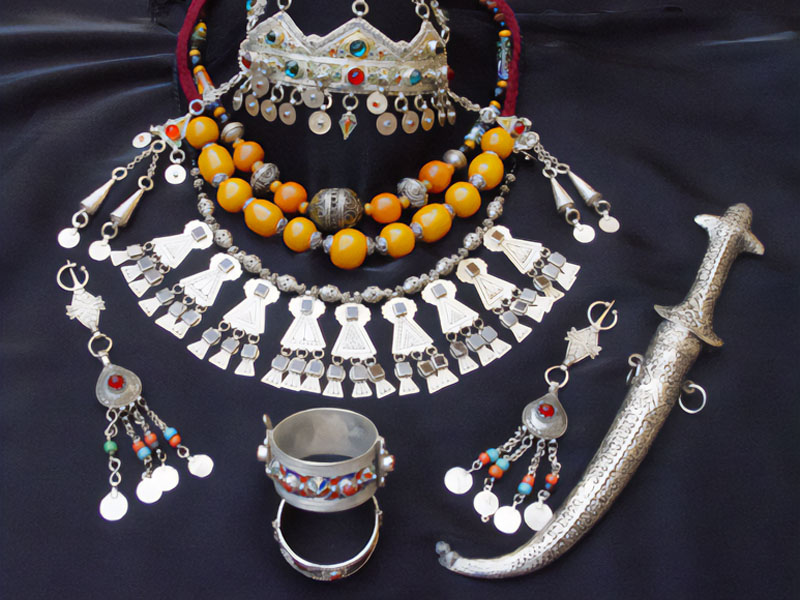The History of Ornaments In Morocco
Issue 11

Al-Hasan Tikbdar (Morocco)
These sites are dating from the upper Paleolithic or what is called the civilization of Iberomorisian. These sites are the cave of (Tfogalt al Wajda), Dar al sultan, al-manasr (al-Ribat), afri al-Barood(Bin Buliman) and Afri Noaman (al-Nadhoor). Some of these findings are colored with red and yellow pierced shells. Among these findings are colored pieces with red and yellow, pierced shell and stone necklaces made from shells and stone. The protohistory era is distinguished with the discovery of the industry of metal. This industry paved the way for the human being to apply new techniques in making modern styles of bracelets. This era is also called the age of metals, its history goes back as early as 3000 years B.C. The age is characterized by using copper and bronze. The rock arts are as rich resources as the archaeological finds, the rock paintings and the ringlets painted on the stone, which have been discovered in Tazanakhan in the district of Wazat, are all rich historical resources, as well. Most of the researchers and archaeologists believe that the first appearance of the ornaments in Morocco starts as early as the beginning of the upper Paleolithic, this appearance illustrates that the craftsmanship of ornament does not belong to a certain nation, but it is rather an industry and art started since the beginning of all over the world. It is difficult to speak about the ancient techniques applied. However, several conditions should be satisfied for the thorough study for the ancient techniques, For instance, tracing the chronology and apprehending different historical periods. Moreover, it is necessary to examine the techniques against the geographical background, the social situation and cultural exchange. The researcher studies the ancient and the modern family contracts. These contracts are old manuscripts such as wedding contracts or the terminology common in Sosian strict "al-Jihas". In Amazig language the terminology used in "Arolo". These contracts help us considerably in understanding several aspects of the ornaments in the Southern Morocco. The contracts also inform us about the relation between the individuals and the communities, together with the mood of living and what had the tribe sanctified. Lastly, these contracts afford an intensive description about the economic, social and cultural situation of this society or that.



































































